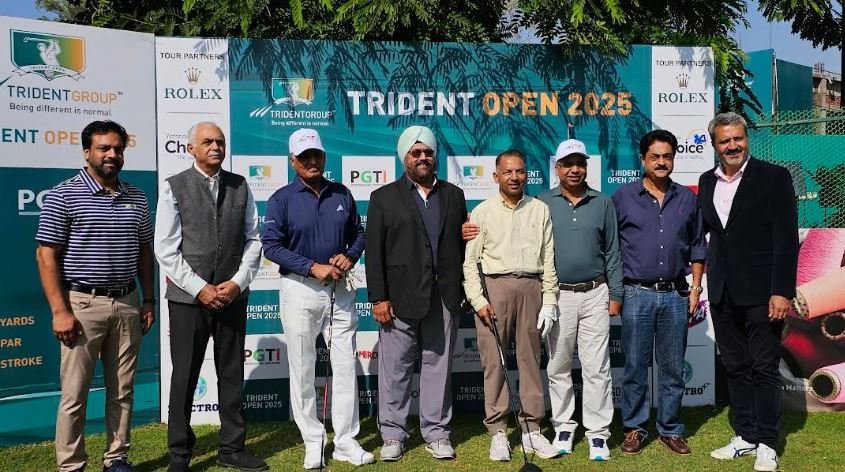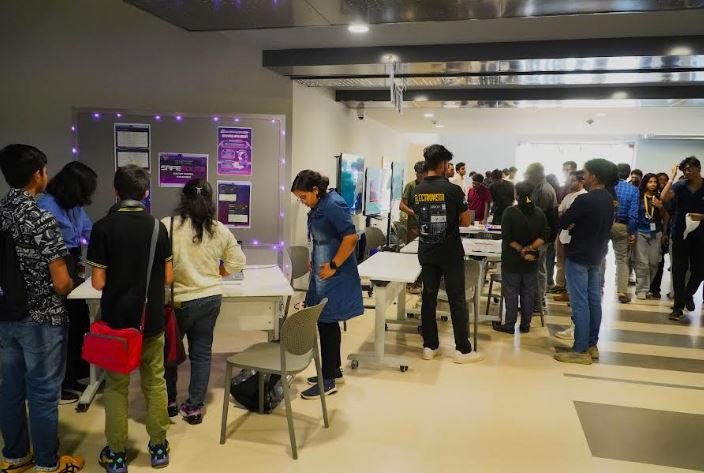It was research for my historical novel, Wanderers, All, that led me to the police headquarters in Mumbai. My enquiry about the Bombay Police Gazette from 1911, among other information, was met with a blank stare. A helpful constable then led me to the in-house library that comprised a large bookcase mostly inhabited by books on criminal law (nestled amid these was the intriguing title, Laws of the Spirit World).
While visits to state libraries and archives in Mumbai and Goa provided much of the information I needed, there was a paucity of specific references, visual or otherwise. I relied on family photographs, memoirs, and memorabilia—my own and those of others like Maxine Steller, the daughter of the last British Deputy Commissioner of Police in Bombay, who had lived in Bombay before Independence. Help also came from unexpected quarters: exhibitions such as “The Artful Pose: Early Studio Photography in Mumbai” and “Homai Vyarawalla: A retrospective” and their accompanying books, from private archives like those of the Alkazi Foundation for the Arts (AFA). As for information on the police, a kindly Assistant Superintendent eventually pointed me in the direction of police historian Deepak Rao, a retired police officer who is known for his personal archive.
The exercise led me to contemplate the meaning of the archive and its rightful custodians. In this era of misinformation, distortion of history, and digital clutter, the formal archive is of utmost importance. How can historical records be made more visible and relevant?
While special permissions are required for access to most state archives, private entities such as DAG and AFA’s Alkazi Collection of Photography and Alkazi Theatre Archive have made a concerted effort towards making archival material from their collections accessible to the public in the form of curated exhibitions, talks, and events. Among DAG’s shows this year was “People of Bengal: Coloured Etchings by F Baltazard Solvyns” held at the Bhau Daji Lad Museum in Mumbai, while “Birds of India: Company paintings C 1800-1835” is currently on exhibit at Kasturbhai Lalbhai Museum, Ahmedabad (October 3– November 10).
Photo documentation at the Sarmaya Archive.
| Photo Credit:
Sarmaya Arts Foundation
In 2022, the Serendipity Arts Festival held in Goa, too, displayed “Orientalist Archives: Indo-British Painting in Colonial India”, Company School painting from the Swaraj Archive— among the largest private collections of the Company School in India—curated by Jyotindra Jain and Dr Jutta Jain Nebaruer. Meanwhile, Sarmaya Arts Foundation, founded in 2015, has made its collection available online, and its extensive programming includes arts-themed travels apart from talks, workshops, and walkthroughs.
Retrieving and interpreting history
“Archives have built-in ‘gatekeepers’ or filters,” says Fleur D’Souza, former Head of the Department of History, St. Xavier’s College, Mumbai. She adds that historians now talk of “going beyond the archive”, or breaking away from an often biased or singular perspective with a more objective approach through photographs, memorabilia, and so on.
Given that India’s state/institutional archives are largely colonial in origin, there is, of course, the question of the colonial gaze. Company paintings refer to a style of painting that evolved in British India, with works done by Indian artisans for European patrons and audiences. Meanwhile, as curator and historian Giles Tillotson pointed out before his walkthrough—available for viewing on YouTube—of “People of Bengal”, Solvyns’ etchings were made by a European for a European audience unfamiliar with the imagery of Bengal and India. Tillotson made an interesting comparison between the Kalighat paintings of Bengal (created by local artisans for an Indian audience) and those of Solvyns, who documented his experiences of the erstwhile state of Bengal, its people, and culture. While the former present a more authentic picture of Bengali society, Solvyns projects an exotic country using the terms “Indian” and “Hindu” interchangeably.
Exhibition: “Echoes of the Land–Art” bears witness to a changing planet, in collaboration with Ojas Art Gallery, Delhi, November 2022.
| Photo Credit:
Sarmaya Arts Foundation
“Research is critical, and opening up the archive to scholars is important so that you get nuanced opinions,” says Tasneem Zakaria Mehta, Honorary Director and Managing Trustee of Bhau Daji Lad Museum, adding that “A museum is also, in a sense, an archive.” The museum’s latest publication, Mumbai: A City Through Objects–101 Stories from the Dr. Bhau Daji Lad Museum, was an exercise, she says, in deep research over many years.
Also Read | South Korean artist Kyungwoo Chun challenges perceptions through thought-provoking artwork
“Research has to be open-minded and supported by multidisciplinary communities, because to understand an object you may need a combination of historians, scientists, linguists, sociologists, anthropologists, geologists to be brought together in a collaborative mode,” says Paul Abraham, founder of Sarmaya. “Constant engagement with audiences is essential,” he adds.
The Goan cultural centre Sunaparanta’s current exhibition is the result of an unusual collaborative exercise. “ArQhive Early-Modern-Contemporary Visions” (August 9-November 2) brings to life three forgotten 16th and 17th century visual texts in watercolour: the Codex Casanatense, which depicts daily life in Goa, Asia, and Africa; Suma de árvores e plantas da Índia intra Ganges, a compendium of Goan plants; and O Livro das plantas de todas as fortalezas, cidades e povoaçõens do estado da India Oriental, illustrations of coastal areas in Africa and India. But this is no archival exhibit; in fact, the texts in question remain safely ensconced in libraries in Europe. It reintroduces these archival texts, originally produced in Goa, by inviting artistic interpretations of them. It uses them as a point for artistic departure, to pique the viewer’s curiosity and provoke engagement.
“Goa tends to be regarded as a centre for culture from a very spectacular point of view. It is not often that she is the subject in the larger canon of contemporary art,” says curator Leandré D’Souza. “This is also the first time,” she adds, “that [the archival texts] have been studied in Goa, within a contemporary art context.”
Leticia Alvares, A Tapestry of Unity, 2024, acrylic on canvas.
| Photo Credit:
Kristion Colaco, Sunaparanta Goa, 2024.
The exhibition is the result of a series of workshops between Leandré D’Souza, historian adviser Dale Luis Menezes, researcher Susana Bastos Mateus, and a group of artists whose works give the texts a contemporary context with themes of “identity, belonging, power, representation, cultural heritage, environmental sustainability and the politics surrounding these issues”. The interpretations range from gender and the practice of Sati to research of pigments and fossils inspired by the travel of the Mexican cochineal dye (produced by grinding the bug Dactylopius coccus found on cacti to make the pink colour used in O Livro); an artwork offragments from an imagined fresco that seems to piece together elements from the archives, to a collection of archival films that “project variations of an imaginary and imagined Goa”, among others. There are unusual renditions such as Nadia de Souza’s The Wedding at Hormuz, a striking take on a scene from the Codex Casanatense that depicts a dinner party at a Portuguese household in Hormuz, Iran, where the room was flooded to keep the house cool; meanwhile, Viraj Naik’s visual wooden manuscripts in Series: Dialogue between the two are a tribute to an artisanship unique to Goa: the ancient technique of wood painting.
In Memories Archived, the book accompanying the exhibition, Menezes says, “The act of retrieval possesses the generative potential of new directions. The archive in ArQhive becomes a repository of stories to tell and inject newness into our contemporary times. It becomes a resource to make sense of our present. How did we get here? Where do we go?”
Presenting and reimagining the archive
At AFA, research, archiving and presentation of its materials in the form of publications, exhibitions, and talks, is an ongoing process. These comprise the private collection of 19th century photographs and materials related to post-Independence theatre, of its founder— theatre stalwart and arts patron—Ebrahim Alkazi. In order to encourage public engagement, AFA has taken exhibitions like “Convergence: A Panorama of Photography’s French Connections in India” (a collaborative exhibition that was a part of Bonjour India 2022) to public spaces such as Amdavad ni Gufa in Ahmedabad and the garden of the CSMVS Museum in Mumbai, among other venues. Their online portal and app, ASAP | art was launched as a direct result of COVID and is described by AFA as “an editorially driven application that publishes critical writing and conversations around lens-based art and media with a focus on South Asia”.
Exhibition: Shifting Selves: Between meaning, mythology and mirage, in collaboration with TARQ, Mumbai, 2021.
| Photo Credit:
Sarmaya Arts Foundation
“What we decide to pull out of the archive is not done in a chronological way but based on what we believe is the thematic anchor for the time,” says Rahaab Alaana, curator, AFA. Meanwhile, the act of archiving, itself, he asserts, is one that requires balance and sensitivity, and entails a huge responsibility. “The role of the archivist has changed from that of a custodian to one of an intermediary,” he says. “While putting together our album of Palestine, we asked ourselves the question, ‘Will this moment in time colour our vision?’”
Also Read | How the Serendipity Arts Festival celebrated the spirit of community
At the multi-genre Sarmaya archive located in Mumbai, items in the collection have been digitised and are brought alive through physical and digital storytelling. “We would like to put things in a context of community and India’s history, and present our culture as a continuum which it is. In India we are a culture that transmits our stories from one generation to another. We are a living culture,” says Abraham. Abraham and his wife Pavitra Rajaram now carry forward the archive he founded after the passing of his then wife, Tina, with the collection he had built with the latter; it includes rare currency, maps, books, engravings and etchings, early photography, indigenous art and contemporary art.
Sarmaya supports indigenous communities with artistic commissions and runs outreach programmes for “kids and young adults of all backgrounds and levels of ability”. Abraham says that while the digital medium transcends geographical boundaries, the availability of multiple platforms allows for “layering of the storytelling” with Instagram as a medium for short bursts of information with some visual engagement, YouTube for more visual engagement and longer videos, and the website for long form content dissemination.
Digitisation not only widens access but also mitigates wear and tear of archival material, points out Fleur D’Souza. There has been concern over the deteriorated state of rare books and historical texts in the Krishnadas Shama Goa State Central Library for lack of functioning air-conditioners, and the State’s Department of Archives,too, was recently moved out of its old building that was located in a flood-prone area. “Only two state archives in India have been digitised: The National Archive, and Rajasthan State Archives,” she says.
Sarmaya partnered with Urban Sketchers in Mumbai on September 24, 2024.
| Photo Credit:
Sarmaya Arts Foundation
The digital medium, itself, has a treasure trove of archival material online. Portals like archive.org with rare texts, audio and films that may be downloaded for free; the film archives of British Pathé; online music archives; Facebook groups and Instagram handles like Brown History that share stories and photographs of communities, all provide material in a single space: the Internet. Which brings us back to the question of the archival point of view—neutrality and filter. What really constitutes the archive in the digital and social media era? Add to the mix, the use of Artificial Intelligence; how can material be archived or recorded responsibly, and presented critically in the future?
Leandré D’Souza says, “The cultural historian Saidiya Hartman speaks of the archive as a living, moving thing, that changes as we speak. How do we recover, give life to the ghosts from the archive, those voices that were not heard or silenced? What do the archives tell us about our lives and how do they enable us to negotiate our present situation?”
Time will tell how we interpret the present even as we reimagine the past.
Janhavi Acharekar is an author, a curator, and creative consultant.


